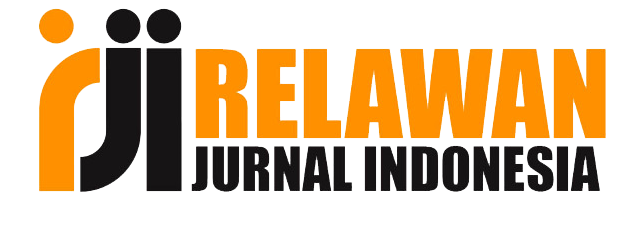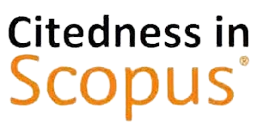Teaching English: An afresh sophisticated technique to cultivate digital native learners' vocabulary by utilizing seesaw media as digital literacy
DOI:
https://doi.org/10.33474/j-reall.v1i2.6855Keywords:
seesaw media, digital, literacy, vocabulary, teaching EnglishAbstract
In the modern and digital era, digital native’s learners are conceived into an era of digital networking. It keeps everything connected to technology. Digital natives with digital technical expertise and abilities which can theoretically be utilized for improved learners’ interaction in the classroom. The government has began to vigorously increase the literacy culture in schools by doing reading literacy.
Teachers will be willing to provide an precedent by developing a community of literacy at school. Increased classroom reading atmosphere also improves vocabulary for learners studying English. The Seesaw Media implementation may also help learners to insert allusions to enhance scientific knowledge as a regulatory framework for learning. The aim of this research was to discern the use of Seesaw as the media of literacy to cultivate learners’ vocabulary. This research pursued to answer two research questions; (1) does Seesaw Media helps learners to improve their reading ability? And (2) what are the impacts of Seesaw Media application on the learners on developing vocabulary? The methods used by the researcher were; firstly, the researcher distributed the questionnaire with the English learner's. Secondly, the researcher assessed the feedback from the respondents. Thirdly, the researcher sought the response to the learners on the effect of reading ability by using Seesaw. This research has used descriptive qualitative to conduct the research study. This result of the research has shown the Seesaw Media helped learners to improve their reading ability.
References
Apandi, I. (2016). Guru dan Budaya Literasi. Retrieved January 4, 2020, from kompasiana.com website: https://www.kompasiana.com/idrisapandi/568cf007f77a614115a384e2./guru-danbudaya-literasi
Basurto Santos, N. M., Alarcón, M. M. H., & Pablo, I. M. (2016). Fillers and the development of oral strategic competence in foreign language learning. Porta Linguarum, 2016(25), 191–201.
Cam, L., & Tran, T. M. T. (2017). An evaluation of using games in teaching English grammar for first year English-majored students at Dong Nai Technology University. International Journal of Learning, Teaching and Educational Research, 16(7), 55–71. Retrieved from
https://pdfs.semanticscholar.org/ea44/48f1c6cbb8dab7420abbd20a993a86728206.pdf
Finegan, E., & Chaika, E. (1985). Language: The Social Mirror. Language. https://doi.org/10.2307/414431
Harmer, J. (2007). The Practice of English Language Teaching. 394–409.
Kemendikbud, R. I. (2015). Penumbuhan Budi Pekerti.
Nur, M. R. O., & Riadil, I. G. (2019). Digital Natives ’ Preference in 4 . 0 Speaking Learning Class. 3rd English Language and Literature International Conference (ELLiC), 3, 202–208.
Patton, M., & Cochran, M. (2007). A Guide to Using Qualitative Research Methodology. In Medecins Sans Frontieres. Retrieved from http://msf.openrepository.com/msf/handle/10144/84230
Sakti, P. (2012). BUDAYA LITERASI SEBAGAI RELASI DUNIA : bersaing di tingkat dunia. Pasalnya, posisi pemuda begitu strategis mengingat daya nalar revolusioner yang tumbuh dicetuskan setelah dan sebelum proklamasi kemerdekaan. Prosiding Seminar Internasional Multikultural & Globalisasi 2012, 258–274.
Son, J.-B., Robb, T., & Charismiadji, I. (2011). Computer literacy and competency: a survey of Indonesian teachers of English as a foreign language. Computer-Assisted Language Learning Electronic Journal (CALL-EJ).
Syahriyani, A. (2010). Optimalisasi budaya literasi di kalangan mahasiswa: upaya meretas komunikasi global. Jurnal UI Untuk Bangsa Seri Sosial Dan Humaniora.
Downloads
Published
How to Cite
Issue
Section
License
Copyright (c) 2020 Ikrar Genidal Riadil

This work is licensed under a Creative Commons Attribution 4.0 International License.
Authors who publish this journal agree to the following terms:
- Authors retain copyright and grant the journal right of first publication with the work simultaneously licensed under a Creative Commons Attribution License that allows others to share the work with an acknowledgement of the work's authorship and initial publication in this journal.
- Authors can separately make additional contractual arrangements for non-exclusive distribution published by the journal (e.g., publish it in a book), with an acknowledgement of its initial publication in this journal.
- Authors are allowed and encouraged to send their work via online (e.g., in the institutional repositories or their website) after published by the journal.






















